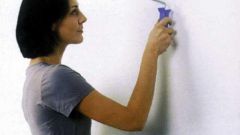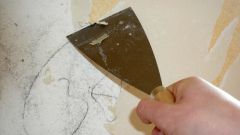You will need
- - Potato starch;
- - sieve;
- - warm water;
- - boiling water;
- - capacity for dilution of paste;
- - kettle
- - spoon or stick for stirring paste;
- the colander;
- - gauze;
- - carpenter's glue or PVA glue (if necessary).
Instruction
1
Prepare the starch for the preparation of the paste. To do this, you must carefully sift it through a fine sieve to eliminate the appearance of tool indissoluble lumps and mechanical impurities. After that, pour the prepared raw material is warm water and mix well to make a batter (like for pancakes). It is important to correctly calculate the required amount of starch. Usually in a bucket of water is sufficient kilograms of dry powder.
2
Start typing in the starch slurry the boiling water, brewing the paste. The stream should be thin and not be interrupted (for example, pour water from the spout of a teapot). Stir the mixture until it becomes homogeneous. To interfere requires an intensive, long stick or spoon to break up resulting in mass clumps. Even if the paste in a pot already brewed and will be transparent, continue to add the remaining amount of boiling water. Please note that during cooling, the solution thickens.
3
Strain fresh hot starch paste through a piece of cheesecloth laid in a colander. You can use a fine sieve. It is impossible to prevent lumps in the adhesive composition, otherwise it is bad for the results of your further work. If properly cook the paste of starch you could not, dissolve a large number of lumps in a water bath. After this procedure, the solution should be filtered.
4
To correct the disadvantage of the pasteand poor resistance to moisture and to improve its adhesive ability you can use those or other industrial additives. The composition would be better to grab if in a bucket of fresh pasteand put a Cup of wood glue (diluted in water) or PVA glue. The prepared mixture can serve as a good primer even on the wall surfaces previously painted with oil paint. But do not forget that working with industrial additives, have carefully enriched their starch paste can leave contamination on a light paper surface.
Useful advice
Accurately calculate the required amount of raw materials to prepare the paste. In a ready solution as you work it will be impossible to add neither a dry powder nor boiling water. On the second day adhesive strength of the composition will decrease so don't do reserves - better covariate it as necessary.


